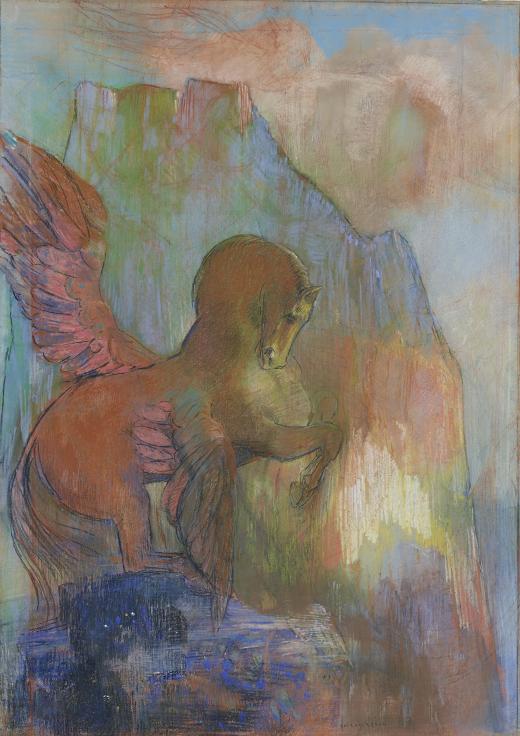SYMBOLISM
Symbolism began as a literary movement in the 1880s, codified in 1886 when poet Jean Moréas published the "Symbolist Manifesto" in the French newspaper Le Figaro. But the idealist philosophies and highly stylized formal qualities of the idiom quickly infiltrated the visual arts. The term Symbolism is applied to a variety of artists who shared anti-naturalistic goals. Sometimes even Neo-Impressionist or Nabis works were identified with Symbolism because of their peculiar forms and allusive subject matter, such as those by the Nabi Maurice Denis, who looked to religion and allegory and used sinuous line and flattened zones of color or all-over patterning. Indeed, artists associated with Symbolism did not always define themselves as such, among them Odilon Redon. Yet his eerie "noirs" of floating, disembodied heads and creeping spiders, and his later incandescent pastels and paintings, unmoored from reality, their meaning enigmatic and locked in hermeticism, are closely associated with the style.
Most of the artists connected to Symbolism were averse to materialism and had lost faith in science, which had failed to alleviate the ills of modern society. They chose instead to probe spiritualism and interior states of mind in suggestive and evocative images, and decorative idioms, nourished by Art Nouveau’s organic motifs and arabesque forms, permeated their work. Symbolist art embraced mythic narratives, religious thematics, and the macabre world of nightmares, abandoning the factual for the fantastic, the exterior world for the drama of psychological landscapes, the material for the spiritual, and the concrete for the ethereal. Although deeply rooted in narrative, Symbolism sought to elicit abstracted sensations and, through the subjective imagery depicted, to convey universal experience. These impulses responded to a yearning engendered by the dark side of modernity—the search for the transcendent.



